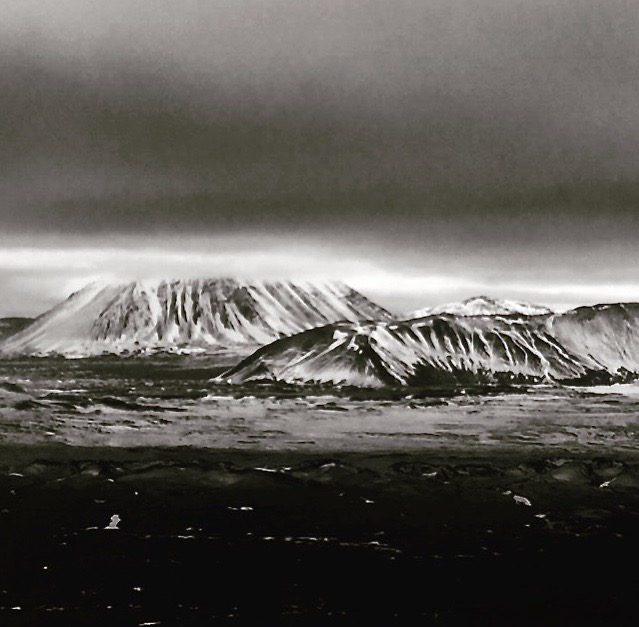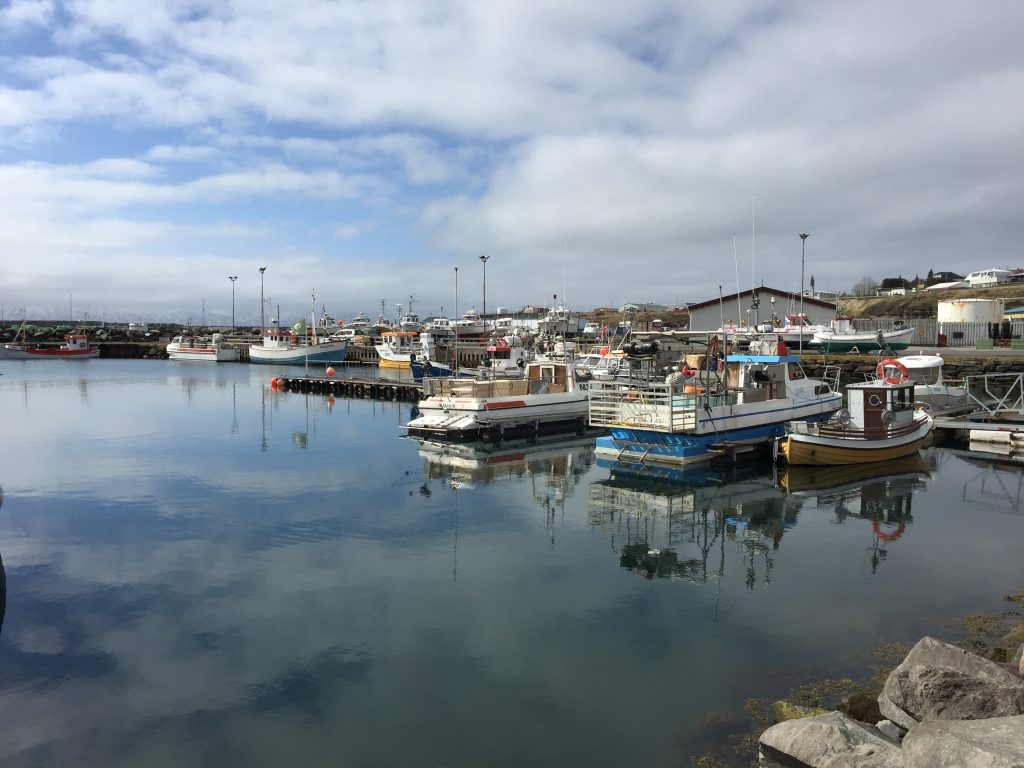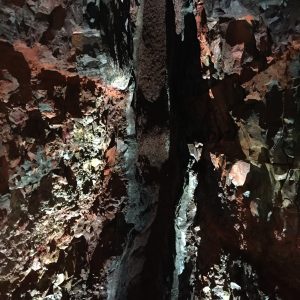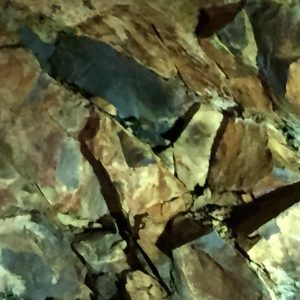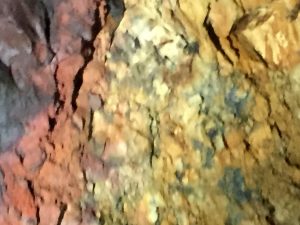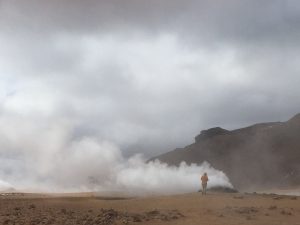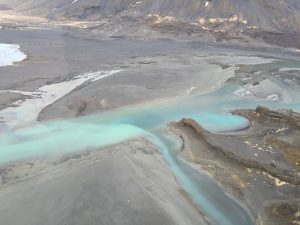New York-Rejkyavik is a mere 4h37m, a remarkably short time in which to travel to a virtual moon.
We all know that NASA sent its astronauts to practice their moon landing walks in Iceland’s northern lava fields, but that does not prepare you for the stunning beauty of the country, the diversity of its landscapes, the sounds of roaring mud pots and erupting geysers, the omnipresent smell of money – and by that I mean the smell of sulfur and fish. Iceland, the world’s oldest democracy, is a country that, in spite of a roiling underworld and a lashing sea, has thrived on fishing, farming and the harnessing of its geothermal power.
Iceland is an adventurers’ destination, a perfect place to spend a long weekend in summer or in winter if you love the out-of-doors. From cross country skiing and paragliding to ice climbing, river rafting and ATVing, the island – which is the size of Kentucky – is a giant playground for those who love nature as well as adrenaline pumping activities. Nature is pristine here and, in spite of the fact that Icelandic tours mostly concentrate in the Golden Circle of the South, super jeeps, four wheel trucks, snowmobiles, fixed wing planes and helicopters can whisk you in to hardly accessible canyons, land you on ice caps, deposit you on salmon-rich rivers and arctic char-filled lakes, and drop you down the gullet of an extinct volcano into a glorious magma chamber.
Tethered to the railing of an open elevator, 6 of us climb into the cable suspended conveyance and descend slowly, 200 meters into the throat of Thrihnukagigur, the Three Summit, volcano. The narrow passage gradually opens into the wide belly of the mountain and we land, gentle as the Apollo Lunar module, on to the volcanic floor.
Strategically floodlit, we are inside a cathedral, walls soaring above us painted the colors of gemstones. A fine rain, filtering for three years through the porous earth above, drops like rhinestones to the crater floor.
The smell of sulfur is omnipresent in the island’s interior where geysers blow, mud pots boil, and vapor snakes through earth cracks. The innards of Iceland are roiling; muscular, young, impatient, this as an island that is still becoming. From the lava flows to the vents, the wind blown field furrows to the ice floes, this restless world wears its history on its face.
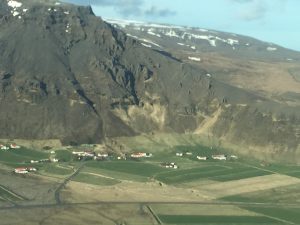
Traditionally a country of fishermen and farmers, the strength of the Icelanders comes from knowing that anything is possible at any time
It’s a narrow band of very fertile soil in the south, sandwiched between ocean and fire and ice, that gives farmers their livelihood. There is always a tension, however, a kind of waiting for the earth to pull its punches. “We are defined by our island and our weather,” Gummi tells me. “We expect anything at any time.”
This sentiment is beautifully expressed by Iceland’s Nobel Prize winning writer, Halldor Laxness in Christianity At Glacier. (It is interesting to me that Icelanders, as a people, are committed readers and writers. There are but 330,000 of them but, I am told, there is always a book in the hand and penchant for writing stories.) Laxness writes:
“May 11; the last day of the winter-fishing season. It’s the time of year called ‘between hay and grass,’ looked at from the sheep’s point of view;the time when the hay is finished and the grass not yet started to grow. It’s often a weary time for ruminants; indeed, spring has always been the season in Iceland when animals and people perish.”
Restless and fragile; pragmatic and superstitious; fire and ice. This is a land of contrasts and, as with all things black and white, it is in the gray interstice that you will uncover finer meaning. For that, it will take far longer than a long weekend, of course, but it is well worth taking that first step.
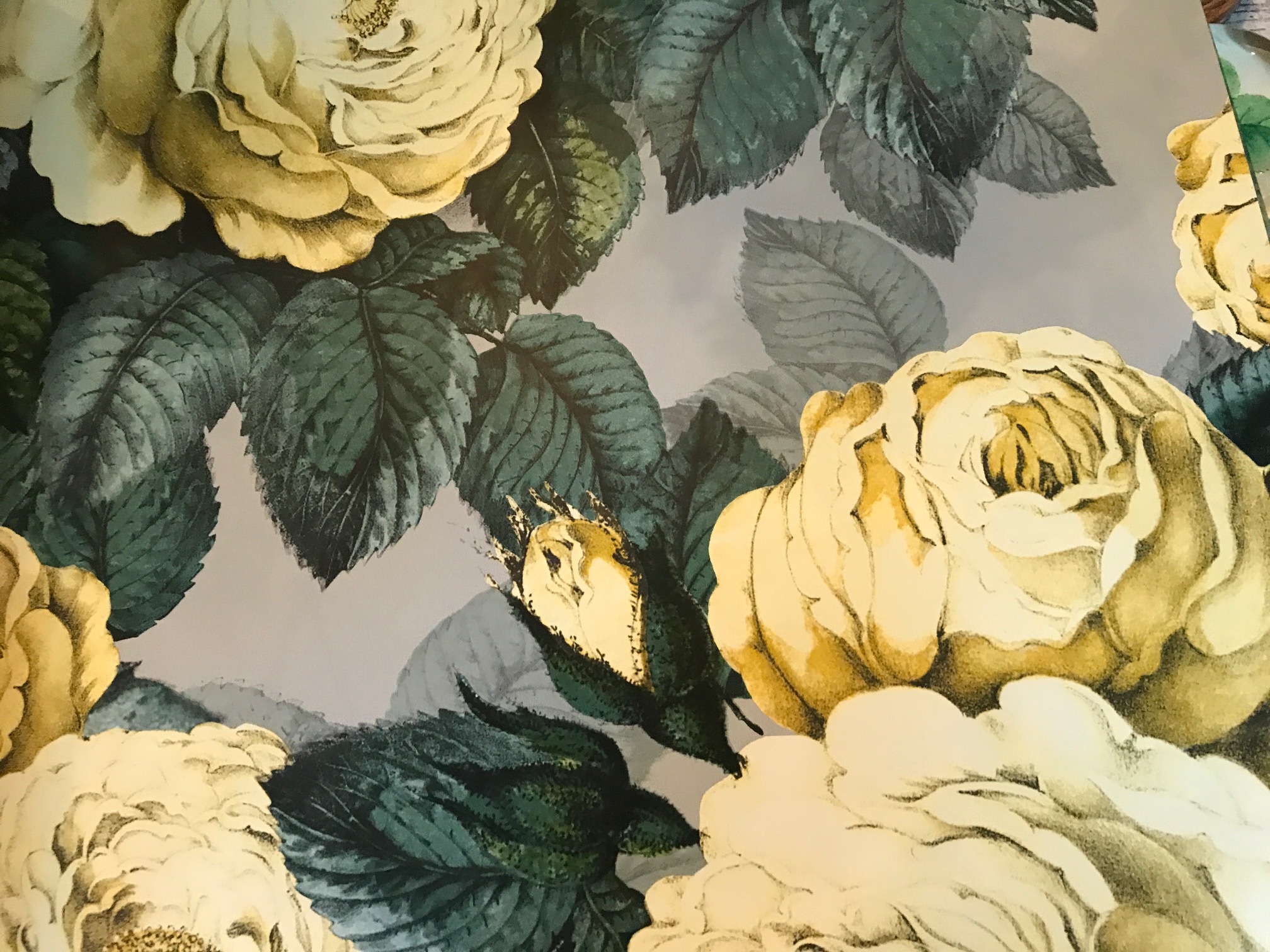 John Derian is a treasure. It's not that there aren't many with talent and vision because there are, the world over. But Derian has other attributes that make him so beloved. His eye is unerring, his sense of scale is perfect, he layers cultures and eras seamlessly in a room. And he is accessible in brick and mortar. His two shops on East Second Street have been haunts for years. One carries the decoupage he designs and constructs locally (and that make the best gifts ever) along with the coveted ceramics of Astier de Villatte. The second Dry Goods store next door showcases quirky antiques, an assortment of vintage furniture, stacks of heavy french linen, Moroccan rugs and soft cotton Indian clothing. Both are small, but intriguing and interesting enough to seduce you on a journey of the senses.
And now, Derian has opened on Christopher Street in a double-windowed storefront of a two-story 18th century house. It's like walking in to another world. Traditional Astier, and the later Derian/Astier collaborative pieces, line the walls from roof to floor of the front room. The back room, wallpapered in his new cabbage rose design and lit by beautiful Balthus-designed standing lamps with parchment shades, offers a living room in which to settle in, thumb through books and albums, and rest the soul.
So, go to shop, or simply go to travel in spirit to another place and time.
https://www.johnderian.com/pages/our-locations"
["post_title"]=>
string(21) "John Derian Goes West"
["post_excerpt"]=>
string(0) ""
["post_status"]=>
string(7) "publish"
["comment_status"]=>
string(4) "open"
["ping_status"]=>
string(4) "open"
["post_password"]=>
string(0) ""
["post_name"]=>
string(21) "john-derian-goes-west"
["to_ping"]=>
string(0) ""
["pinged"]=>
string(0) ""
["post_modified"]=>
string(19) "2018-06-07 09:33:42"
["post_modified_gmt"]=>
string(19) "2018-06-07 13:33:42"
["post_content_filtered"]=>
string(0) ""
["post_parent"]=>
int(0)
["guid"]=>
string(31) "http://lisalindblad.com/?p=8571"
["menu_order"]=>
int(0)
["post_type"]=>
string(4) "post"
["post_mime_type"]=>
string(0) ""
["comment_count"]=>
string(1) "0"
["filter"]=>
string(3) "raw"
}
}
John Derian is a treasure. It's not that there aren't many with talent and vision because there are, the world over. But Derian has other attributes that make him so beloved. His eye is unerring, his sense of scale is perfect, he layers cultures and eras seamlessly in a room. And he is accessible in brick and mortar. His two shops on East Second Street have been haunts for years. One carries the decoupage he designs and constructs locally (and that make the best gifts ever) along with the coveted ceramics of Astier de Villatte. The second Dry Goods store next door showcases quirky antiques, an assortment of vintage furniture, stacks of heavy french linen, Moroccan rugs and soft cotton Indian clothing. Both are small, but intriguing and interesting enough to seduce you on a journey of the senses.
And now, Derian has opened on Christopher Street in a double-windowed storefront of a two-story 18th century house. It's like walking in to another world. Traditional Astier, and the later Derian/Astier collaborative pieces, line the walls from roof to floor of the front room. The back room, wallpapered in his new cabbage rose design and lit by beautiful Balthus-designed standing lamps with parchment shades, offers a living room in which to settle in, thumb through books and albums, and rest the soul.
So, go to shop, or simply go to travel in spirit to another place and time.
https://www.johnderian.com/pages/our-locations"
["post_title"]=>
string(21) "John Derian Goes West"
["post_excerpt"]=>
string(0) ""
["post_status"]=>
string(7) "publish"
["comment_status"]=>
string(4) "open"
["ping_status"]=>
string(4) "open"
["post_password"]=>
string(0) ""
["post_name"]=>
string(21) "john-derian-goes-west"
["to_ping"]=>
string(0) ""
["pinged"]=>
string(0) ""
["post_modified"]=>
string(19) "2018-06-07 09:33:42"
["post_modified_gmt"]=>
string(19) "2018-06-07 13:33:42"
["post_content_filtered"]=>
string(0) ""
["post_parent"]=>
int(0)
["guid"]=>
string(31) "http://lisalindblad.com/?p=8571"
["menu_order"]=>
int(0)
["post_type"]=>
string(4) "post"
["post_mime_type"]=>
string(0) ""
["comment_count"]=>
string(1) "0"
["filter"]=>
string(3) "raw"
}
}
